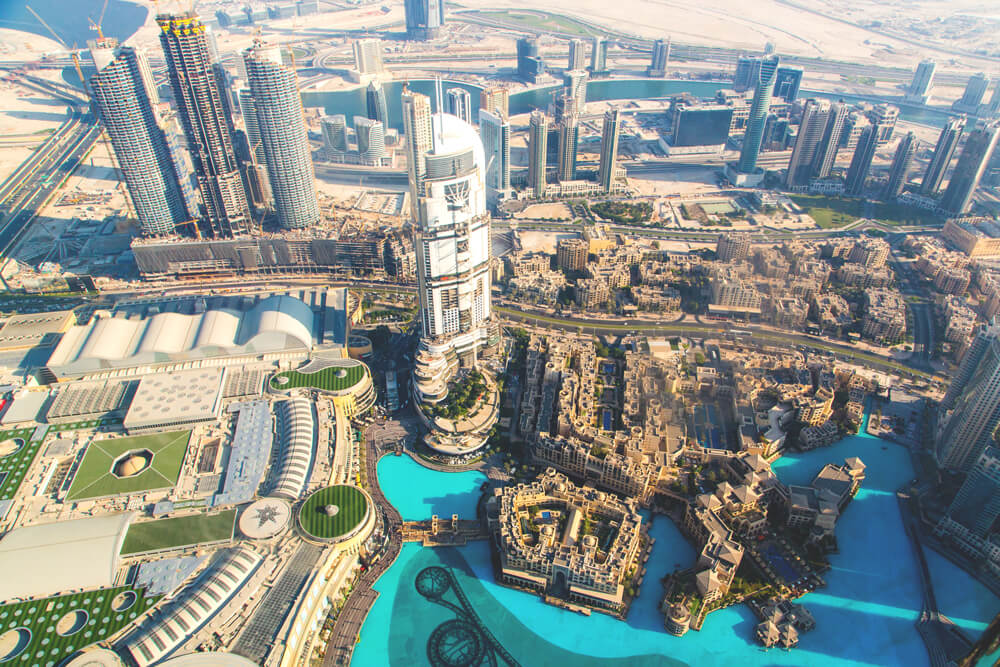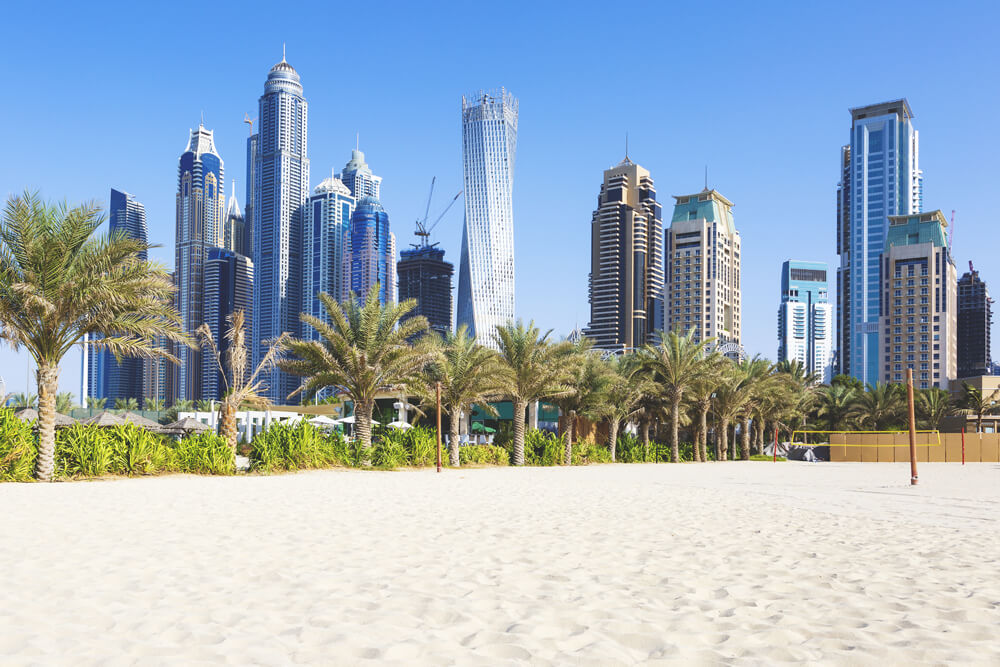Dubai, a fascinating metropolis and fairytale from 1001 Nights. The city lies on one side on the brilliant blue Persian Gulf and on the other on miles of desert landscape. With almost 2 million inhabitants, Dubai is the largest city in the United Arab Emirates. Have you ever wondered whether Dubai is a city or an emirate? You’re not alone, as this question often leads to confusion. The answer is quite simple: Dubai is both a city and a country, or rather, an emirate.
Dubai is very popular as a stopover among long-haul travelers, but this fascinating city in the United Arab Emirates has much more to offer than just terminal changes and transfers. Most people associate Dubai with deserts and luxury, expensive cars, and wealthy sheikhs. If you’re planning a trip to Dubai, you should familiarize yourself with the emirate’s climate beforehand. When is the best time to travel to Dubai? What’s the weather like and what are the temperatures like? You’ll find out all about this in today’s article.
- All information at a glance
- Best time to travel to Dubai
- Climate in Dubai
- Climate in the coastal region
- Climate in the desert region
- Conclusion: Best time to travel to Dubai
- Travel reading
All information at a glance
Best time to travel to Dubai
Due to the high daytime temperatures during the summer months in Dubai, I recommend a trip in the snowy winter between November and April. Temperatures are between 25°C and 30°C, the sun shines for an average of 9 hours a day, and the Persian Gulf also invites you to a pleasant bathing experience with temperatures of up to 27°C. Doesn’t that sound like a great break from the snow and sub-zero temperatures in Germany?

However, you should also keep in mind that between November and March, many travelers flock to the impressive metropolis of the United Arab Emirates. Therefore, you should budget a little higher for your flight and hotel and book well in advance. In general, Dubai is an active and vibrant city year-round, with almost 80% of its approximately 2 million inhabitants coming from all over the world. A place that brings people and cultures together, it’s sure to be an exciting travel destination for you. Also check out the top sights in Dubai.
Climate in Dubai
The climate in Dubai is arid, what we call a desert climate. It is characterized by heat, dryness, and little rainfall. Especially in the summer months, humidity reaches 80%. Maximum temperatures in Dubai exceed 40°C. That’s probably quite strenuous even for the fittest among us. Even cooling off in the sea with water temperatures of up to 32°C is hardly fun.

But even the “winter” in Dubai, with an average of 25°C, doesn’t disappoint any European winter refugee. Sun worshippers shouldn’t worry either, because with 8 to 11 hours of sunshine and bright blue skies, there’s enough sun and warmth for everyone. In the next sections, I’ve divided the climate into coastal and desert regions so that you have all the information you need for your trip to Dubai at a glance.
Climate Coastal Region
Along the approximately 70-kilometer-long coast, you can expect high humidity of up to 80%, despite the little rain during the summer months. Then your sightseeing trip will be truly exhausting, and only the air-conditioned shopping malls will help. A light breeze still provides some cooling every now and then. In the winter months, humidity drops to more pleasant levels of around 40%. However, the Persian Gulf spoils you year-round with pleasant water temperatures of 22°C to 32°C. The best time to travel for a bathing and beach holiday is from October to May.

Climate: Desert Region
90% of Dubai’s area is desert. This is sure to be a key highlight for your trip to the United Arab Emirates. Because you too may dream of a desert safari in a jeep or a trip to the Bedouin camps. You should also be aware that the daily high temperature in the desert can be a few degrees higher than the city’s highs. So, in the summer months, you can expect temperatures around 45°C.
My tip: It’s better to plan these activities for the winter, starting in October. If you absolutely have to go on a trip to the desert, even in the summer months, bring plenty of water and light, thin clothing! But also pay attention to the dress code in the Emirates. Avoid clothes that are too short or tight; opt for loose, long, and thin clothing. The best time to travel to the desert region is also between November and March.

Conclusion: Best time to travel to Dubai
Unless you’re a fit sun worshipper or desert child, I would advise against traveling to the vibrant metropolis during the summer months. Dubai simply has much more to offer than white beaches for soaking up the sun, and it would be a shame if you couldn’t capture all of the city’s highlights in your travel diary because of the heat.
Instead, look forward to a break from the European winter and book your flights between November and April. During this time, nothing will stand in the way of your breathtaking and action-packed excursions into the desert and fascinating sightseeing days in the city. Immerse yourself in Arabian Nights and look forward to plenty of Arabian magic with a touch of Western modernity.
Travel Reading
Want to learn more about Dubai and its people? Then check out the Dumont travel guide*. Here you’ll find all the information you need about Dubai and the surrounding area on 120 pages. We also have a summary of our current best travel novels*.